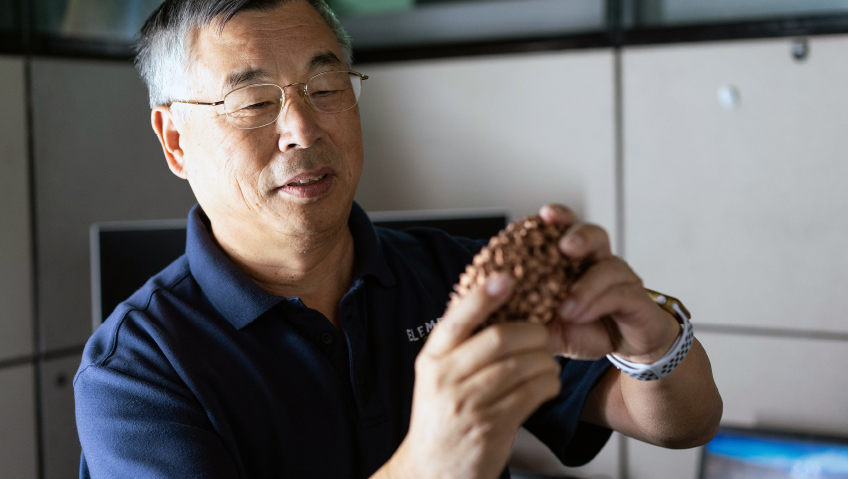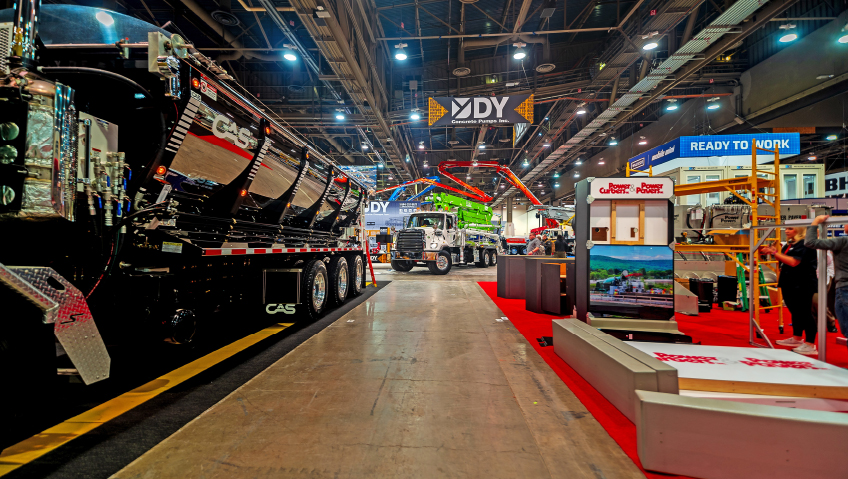Industry 4.0 is characterized by advanced technologies, materials, and processes, which have effectively revolutionized the manufacturing world, enabling efficiency, output, and performance like never before, and achieving this while being mindful of the environment and the bottom line.
The advancements in material science in particular have a profound impact on the way products are designed and produced and how they function, which is both driving and being driven by the rapid pace of innovation both in terms of the technologies and applications themselves, and in terms of further material advancements.
Last year, the global advanced materials market was valued at $68.51 billion (USD) and is forecasted to reach $121.76 billion (USD) by 2033, with North American and Asian Pacific companies leading the charge, jockeying for market share, and redefining what is possible across sectors and industries.
A matter of scale
From small- to large-scale and everything in between, the rate of technological advancement is proving to be a beacon of opportunity for manufacturers across industry sectors and government agencies who see the value in these technologies and have the capital to see them scaled. Key to expansion is not only the development of the technologies, but also the materials, which are truly enabling in this regard. Often, the technology could not be proven without innovative new materials that empower the technology to shine.
A good example of a sector where materials are advancing as quickly as the technologies themselves is additive manufacturing, or three-dimensional (3D) printing. This process entails the construction of a 3D object from a digital model, and employs a variety of processes driven by computer controls which can be used to deposit, join, and/or solidify the materials that are specially formulated for these applications.
In the case of additive manufacturing, there are five main classes of materials: polymers, metals, composites, ceramics, and sand, which are used to achieve the final specifications of the component layer by layer. Compared with traditional manufacturing, material limitations still exist.
With this application, the material properties are developed in tandem with a part’s geometry, as the material will have an impact on the outcome. In addition to process parameters, material properties will have implications for a part or component’s strength, ductility, and finish.
Additive manufacturing is well known for its use in rapid prototyping and its ability to customize and offer production on demand and achieve more complex geometries. It also eliminates some of the requirements for tooling and jigs, resulting in less material waste and lower costs overall, and it can be ideal for supporting low-volume manufacturing, particularly where parts can be expensive, for instance in aerospace. The limits of additive manufacturing often come from the properties of the material itself, and as material options improve, so does the technology.
Certainly, with any relatively new technology, efforts are being made to prove it out, ensuring that speeds and scalability are competitive and that qualifications are in place to establish a standard that can be adhered to—particularly where mission-critical parts or components are concerned. But the potential of this manufacturing approach has caught the attention of many who are seeking new ways to scale its impact.
A more sustainable path forward
In many cases, material developments are driven by the need for more sustainable alternatives that satisfy the changing needs of the market, for instance the electrification of the economy, which has its own material challenges. Researchers continue to develop and identify new cathode materials like titanium fluoride phosphate that offer strong electrochemical capacity and material stability and can replace materials like lithium or cobalt, which are becoming increasingly dear due to limits to supply.
Indeed, material advancements can solve problems where materials are too dear, as is the case with battery production, but also where they are available en masse, as the world has seen with single-use plastics. Amazing research has gone into finding plastic alternatives, like bioplastics made from coffee grinds, which are biodegradable and take advantage of an existing material waste stream. The International Coffee Organization states that more than six million tons of coffee grounds are generated globally and more than half of used coffee grounds are sent to landfills, which proves to be a perfect opportunity to eliminate two problems simultaneously.
The development of bioplastics is not only timely, but also necessary, as researchers have discovered thousands of tiny bits of plastic in everyday items, like single-use water bottles, which then become consumed by humans and animals and cause serious health issues.
Material solutions for material problems
While some materials can be replaced, others are necessary to development, such as concrete. Concrete is the second most widely used material in the world behind water and is necessary to the core infrastructure upon which our economies and communities depend.
More than thirty billion tons of concrete is used annually in construction and its manufacture accounts for anywhere between five to eight percent of global CO2 emissions. Luckily, there are major efforts being made to reduce this impact. Self-healing concrete was invented in 2006 by microbiologist Henk Jonkers at Delft University of Technology in the Netherlands. The healing agent, the nanomaterial bacillus, can be used to heal cracks autogenously or autonomously, which extends the life and performance of the concrete and the structures it is part of, leading to greater sustainability.
While on the other hand, Portland Limestone Cement or PLC, also referred to as Type 1L Cement, which is growing in popularity given the fact that it reduces the carbon footprint of a project immensely, is another shift that is having wider implications. When compared to the previous industry standard, Portland Cement, which is made using a blend of minerals including heated limestone and clay/shale which are heated to very high temperatures thus creating environmentally burdensome burn off, PLC is far less impactful on the environment because unburned limestone filler is added to the mix. However, it also takes longer to harden and doesn’t achieve the same level of hardness as its predecessor.
Carbon concrete is another Portland Cement alternative. By capturing the CO2 generated during the manufacturing process and injecting it back into the cement, a mineralization process occurs, and it becomes permanently embedded in the concrete to offer greater environmental benefits and stronger cement performance outcomes.
According to Arch Daily, “It is a concrete that uses carbon meshes instead of iron elements, making it four times stronger and lighter than the usual reinforced concrete, signaling material and financial savings. Its manufacture takes place through a process of thermal decomposition (pyrolysis) in which ultrafine strands of carbon crystals are extracted and used to create a mesh where the concrete is spread before it hardens,” which makes it more lightweight and flexible as well.
Improved sustainability through the development of environmentally friendly materials like bioplastics and sustainable building materials is not only good for the environment, but it also serves to improve the health and well-being of people and communities. In fact, there are also material advancements taking place that can significantly change a person’s quality of life.
Recently, researchers at Northwestern University have discovered a promising new bioactive material that can regenerate cartilage and can be used instead of invasive joint replacement surgeries and treat the impacts of degenerative diseases.
Rich in potential
It is truly amazing how far material advancements have come, and how much promise they hold for the future. From responsive and smart materials to nanotechnology, material informatics, advanced composites, and two-dimensional (2D) materials, each of these markets promise exciting potential over the next several years.
At present, there are many 2D materials in the pipeline that boast outstanding electrical and optical properties, mechanical strength and flexibility, chemical and environmental stability, and versatile surface chemistry, which can support the development of electronics, sensors, and protective coatings. The use of these materials comes with unique requirements, chiefly the need for instrumentation that is capable of atomic-level and nano-scale visualization to quantify changes in the chemistry to ensure optimal performance. Luckily, there are a number of existing techniques and technologies that will support these activities, which demonstrate how profound material developments and their impacts can be and the implications their further discovery and development can have.
Not only do researchers continue to make materials that offer improved performance in terms of their strength, weight, and function, the rate of technological advancement and its adoption are paving the way for greater manufacturing efficiencies.
Once scaled, these advanced materials and the innovative technologies and processes they are a part of will redefine standards of efficiency, performance, and output, as well as environmental sustainability. That is, until the next best thing comes along, which is all but inevitable given the rate of growth the advanced materials sector can expect in the coming years.






